December 2020 EcoQuest: Spot Spurge
Join the December EcoQuest: Spot Spurge.
Poinsettias (Euphorbia pulcherrima) are often a botanical highlight of the holiday season, but this month we are taking a look at one of their relatives: sandmats. The red, white, and green colors of these plants and their matted growing habit can bring garland or knit sweaters to mind. There’s more than meets the eye when it comes to these tiny tenacious “weeds.” Get into the holiday spirit, get your closeup lenses ready and see how many sandmat spurge plants you can spot.
Join the EcoQuest here:
December EcoQuest: Spot Spurge
Species seen in metro Phoenix on iNaturalist
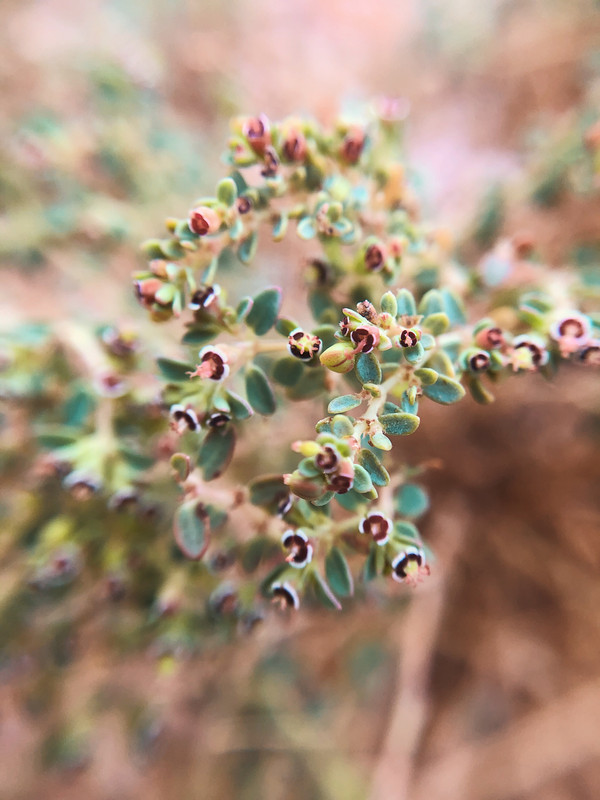
This EcoQuest is focused on sandmat spurge plants (Euphorbia sect. Anisophyllum)
Overcoming some of the harshest urban conditions, these evolutionary champions can be found all over metro Phoenix. Often going unnoticed until they frustrate gardeners or lawn care enthusiasts, sandmats use their prostrate growing habit and exponential seed production to the best of their ability.
There are so many species of sandmats that they have their own section with nearly 400 different species. Sandmats are in the section Anisophyllum. This section is in the genus Euphorbia. A section is a taxonomic rank above species and below genus. The reason for botanical sections is to help with organization, especially when genera are very large, like this one.
Sandmats have interesting adaptations that make them well equipped for survival. They have evolved to grow in a prostrate form, meaning most of the plant grows on or just above the ground. This adaptation helps them go unnoticed underfoot and avoid being eaten by animals. The milky latex sap they produce when broken is also an animal deterrent. Adding to their survival expertise, these plants are allelopathic and each plant can produce several thousand sticky seeds that are explosively dehiscent. Allelopathic means they exude chemicals that keep other plants from growing around them. Having explosive dehiscent seeds means that their seed pods dry, split open and forcefully fling seeds for some distance.

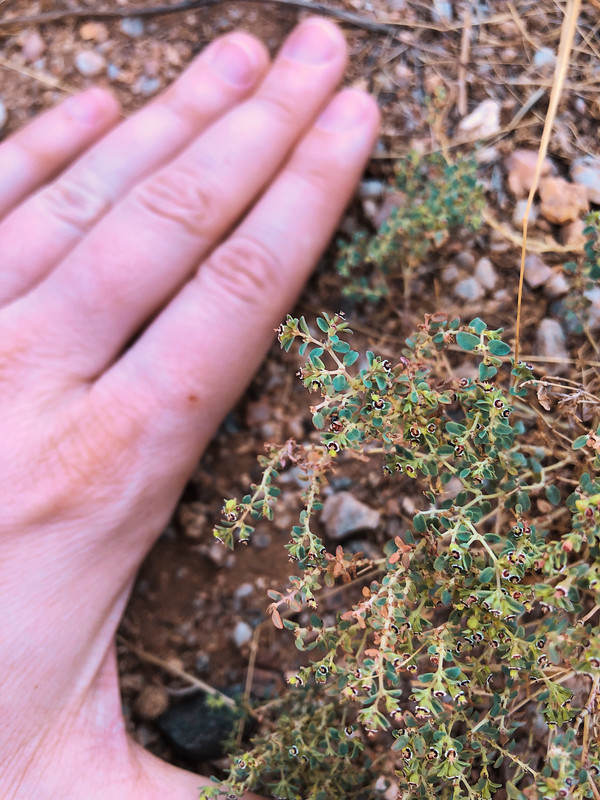
Get ready for a challenge. Sandmats can be very difficult to identify, so great photographs and details are key. A hand lens or closeup lenses on a phone or camera can be very helpful. One of the most distinguishing characteristics of spurges is their flowering structure, called a cyathium, and cyathiums on sandmats are tiny! Other distinguishing characteristics of Euphorbia sect. Anisophyllum include opposite leaves, generally asymmetric leaves, and a clear “upper” and “lower” side to their stems. There are both native and non-native species here in metro Phoenix. Don’t worry too much about identifying these plants to a species level, they can be really tricky! All observations can be helpful and contribute. (See the Description section for identification resources). @NathanTaylor has created a helpful guide for photographing sandmats: Making Great Sandmat Observations
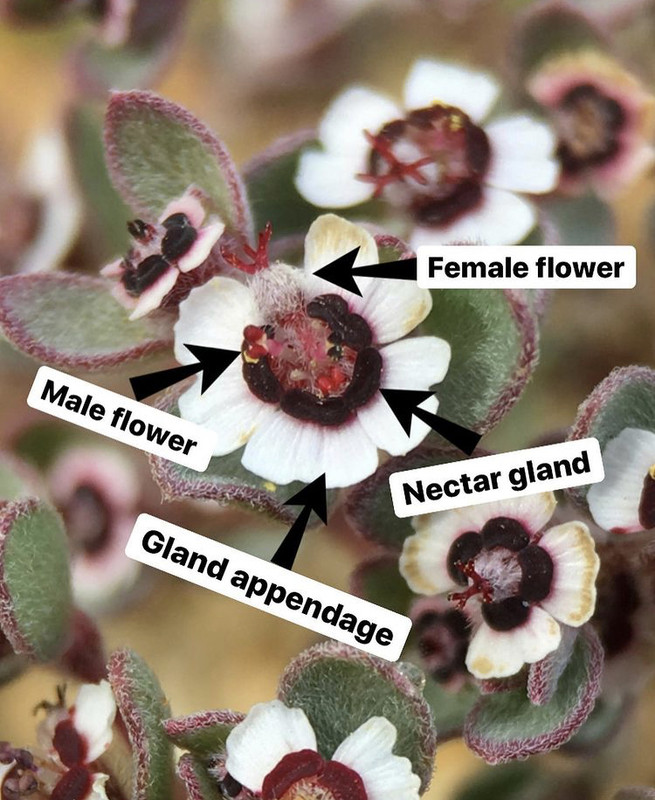
Image by Matt Berger (@sheriff_woody_pct)
As amazing as these small plants are, little is known about their ecological interactions such as pollination. It has been found that ants can help disperse seed and that the smallest bee in North America pollinates sandmat species here in the Sonoran Desert: Perdita minima. Others have been found to be self-pollinating. Could there be other pollinators? Which pollinators visit which species? What insects interact with sandmats? What are the native and non-native distributions? Maybe you can help answer these questions.
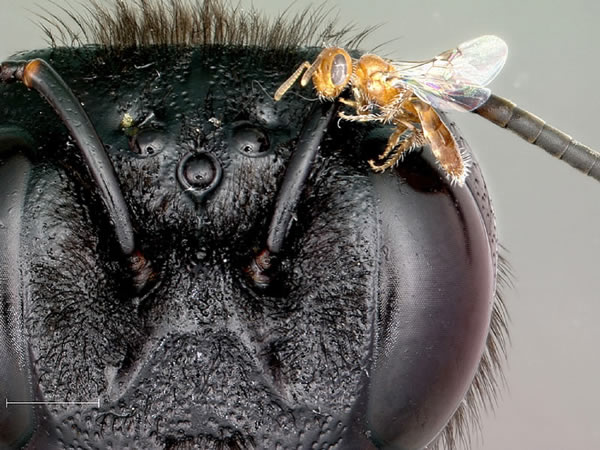
Photo by Stephen Buchmann from USFS
Sandmats are a fascinating world of microstructures and adaptation. Understanding more about these common “weeds” can provide an appreciation and respect for them in their own right.
FUN FACT: Another relative of sandmats, fire stick (Euphorbia tirucalli) should be starting to turn bright reddish orange, putting on a show this month.
Observing and mapping sandmats in metro Phoenix can provide information and data about occurrences and species populations. Ecological interactions like pollination and seed dispersal are especially needed.
The data gathered through this EcoQuest can contribute to Ph.D. student Nathan Taylor’s efforts and research at the University of Oklahoma. Nathan is especially interested in Euphorbia sect. Anisophyllum and has various projects to join on iNaturalist. For our area, it may be most helpful to contribute to "Organisms Associated with Euphorbia." The ecology of sandmats in metro Phoenix is little understood, and our efforts can contribute to this knowledge.
Nathan’s Projects:
Organisms Associated with Euphorbia
Sandmats of the World
Euphorbia Species of the United States

If you can’t get enough of sandmats, listen to this enjoyable, informative and fascinating podcast interview with Nathan on In Defense of Plants.
In Defense of Plants: Spurge is the Word
!!!PLEASE NOTE: Like all plants in the Euphorbia family, sandmats leak a milky latex sap when broken. This sap can be extremely irritating. Take care to not get the sap on your skin or in your mouth or eyes.
WHAT TO OBSERVE:
Scientific Name: (Euphorbia sect. Anisophyllum)
Common Names: Sandmat spurge, prostrate spurge
Family: Euphorbiaceae (Spurge Family)
DESCRIPTION:
Please see the following resources to aid in identification of sandmats:
Section Anisophyllum Explained by Nathan Taylor
Key from Flora of North America
Nonexclusive list of species that have been found in metro Phoenix on iNaturalist
Sandmats on SEINet
WHERE TO OBSERVE:
All over metro Phoenix. These little impressive plants can be found growing in sidewalk cracks, through asphalt, in gardens and in natural areas. They are great at going unnoticed, so keep a sharp lookout!
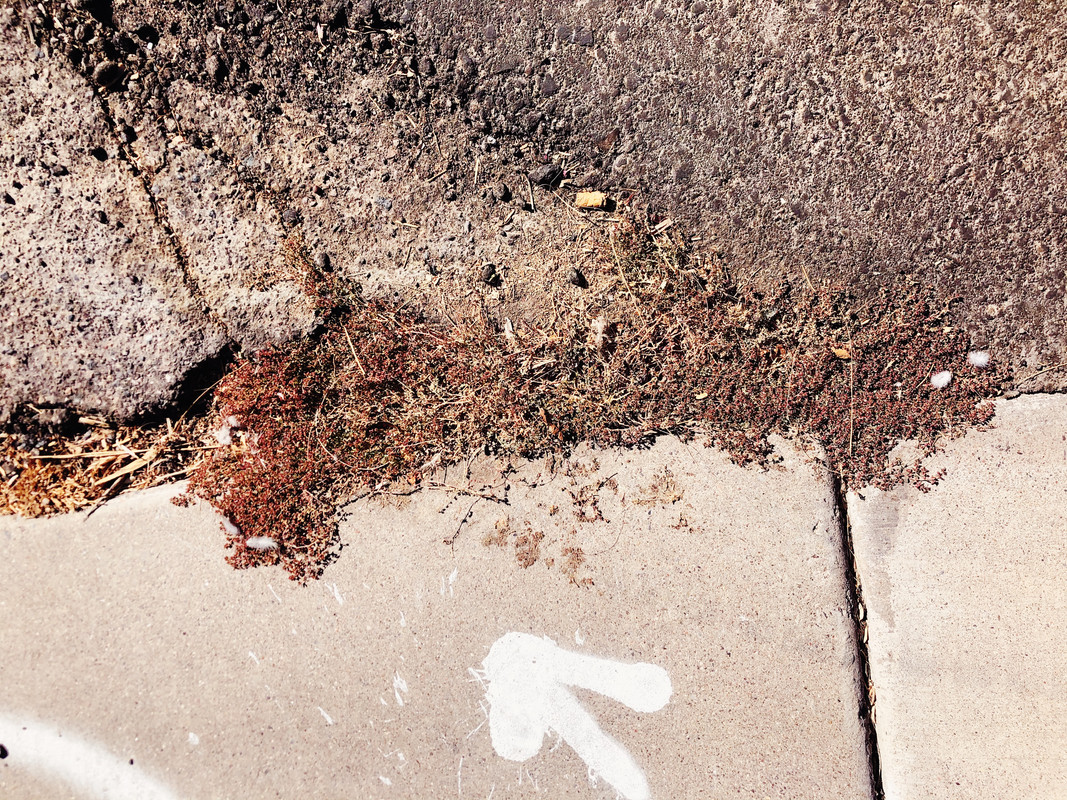
Supporting Sources:
American Journal of Botany (Joan Ehrenfeld):
https://bsapubs.onlinelibrary.wiley.com/doi/abs/10.1002/j.1537-2197.1976.tb11828.x
BioOne (William D. Wiesenborn):
https://bioone.org/journals/the-pan-pacific-entomologist/volume-91/issue-2/2015-91.2.148/Absorbing-incident-ultraviolet-light-decreases-landings-by-Diptera-and-Hymenoptera/10.3956/2015-91.2.148.short
iNaturalist:
https://swbiodiversity.org/seinet/taxa/index.php?taxon=1364&clid=3116
In Defense of Plants: Spurge is the Word with Nathan Taylor
https://www.indefenseofplants.com/podcast/tag/Anisophyllum
University of California
http://ipm.ucanr.edu/PMG/PESTNOTES/pn7445.html
USFS: Peridita minima-“World’s Smallest Bee”
https://www.fs.fed.us/wildflowers/pollinators/pollinator-of-the-month/perdita_minima.shtml

EcoQuests are month-long challenges that are part of the larger Metro Phoenix EcoFlora project.
You can learn more and join the Metro Phoenix EcoFlora here:
https://www.inaturalist.org/projects/metro-phoenix-ecoflora
Sign up for the newsletter at ecofloraphx@dbg.org.
Let's be social @ecofloraphx

PLEASE observe COVID-19 guidelines/recommendations.
This a great opportunity to get outdoors close to home as we all navigate the complications of COVID-19. However, it is imperative that you follow the guidelines/recommendations of your local governments and institutions (wear a mask, practice physical distancing and wash your hands). Do what’s best for you and your community.
Arizona Office of Tourism: Responsible Recreation in AZ
https://tourism.az.gov/responsible-recreation-across-arizona
Please do not observe indoor houseplants or pets.
For your own safety and the protection of plants and wildlife, do not trespass when making observations. Please follow all posted rules and guidelines in parks/preserves and do not enter private property.
Do not remove or move natural materials (plants, animals, rocks).
Respect wildlife (do not touch, feed, or disturb animals and keep a safe distance).




Comentarios
Añade un comentario